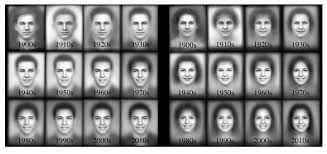What percentage of America is white?
Table
| Population |
|
| White alone, percent |
75.8%
|
| Black or African American alone, percent(a) |
13.6% |
| American Indian and Alaska Native alone, percent(a) |
1.3% |
| Asian alone, percent(a) |
6.1% |
What is the racial breakdown of the United States 2020? The white, non-Hispanic population, without another race, decreased by 8.6% since 2010, according to the new data from the 2020 census. The U.S. is now 57.8% white, 18.7% Hispanic, 12.4% Black and 6% Asian. Some of those changes, Jones said, can be attributed to improvements to the survey.
What percent of America is white or black? Growing Diversity in America
As of 2019, here is the current distribution of the U.S. population by race and ethnicity: White: 60.1% (Non-Hispanic) Hispanic: 18.5% Black: 12.2%
What is the majority race in the US? As of 2021, White Americans are the racial and ethnic majority at 75.8% of the population, with non-Hispanic White Americans representing 59.3% of the population.
What percentage of America is white? – Additional Questions
Which race is the poorest in the United States?
Poverty and race/ethnicity
As of 2010 about half of those living in poverty are non-Hispanic white (19.6 million). Non-Hispanic white children comprised 57% of all poor rural children.
What is the largest race in the world?
The world’s largest ethnic group is Han Chinese, with Mandarin being the world’s most spoken language in terms of native speakers.
What percentage of us is white 2021?
What percent of US is Hispanic?
According to the 2019 U.S. Census Bureau population estimate, there are 60.5 million Hispanics living in the United States. This group represents 18.4 percent of the U.S. total population.
Who is the minority in the USA?
But in the 1990s, the term “minority” usually refers to four major racial and ethnic groups: African Americans, American Indians and Alaska Natives, Asians and Pacific Islanders, and Hispanics. This transformation of America’s racial and ethnic profile is most visible in certain states and communities.
What is the largest minority group in America?
Hispanics are officially declared the largest minority group in the U.S. – HISTORY.
What percentage of Canada is white?
Contrast that with Statistics Canada’s 2011 National Household Survey, which identifies 80 per cent of us as white people (more precisely, StatsCan identified 26,587,570 of Canada’s 32,852,325 non-Indigenous people as “Not a Visible Minority”).
What will the Black population be in 2050?
Racial and Ethnic Groups
The black population, 38 million in 2005, will grow to 59 million in 2050, a rise of 56%. In 2050, the nation’s population will be 13.4% black, compared with 12.8% in 2005.
Is the population of the US declining?
U.S. growth didn’t slowly fade away: It slipped, and slipped, and then fell off a cliff. The 2010s were already demographically stagnant; every year from 2011 to 2017, the U.S. grew by only 2 million people. In 2020, the U.S. grew by just 1.1 million. Last year, we added only 393,000 people.
What percent of USA is black?
13.4%
United States / Black population
Which age group is growing the fastest?
Older persons (ages 65 and above) today comprise the world’s fastest growing age group. Globally, for the first time in 2018, older persons outnumbered children under the age of five, and by 2050, older persons will outnumber adolescents and youth (ages 15 to 24).
Which state has the oldest population?
What state has the highest average age?
Is U.S. population getting older?
The US Population Is Aging | Urban Institute. The number of Americans ages 65 and older will more than double over the next 40 years, reaching 80 million in 2040. The number of adults ages 85 and older, the group most often needing help with basic personal care, will nearly quadruple between 2000 and 2040.
What is considered old age for a man?
Historically, the United Nations has defined an “older” person as anyone 60 years or older, regardless of that person’s individual history or where in the world they live. “Everyone became old at 60,” Petrow writes.
What is the 2030 problem?
The “2030 problem” involves the challenge of assuring that sufficient resources and an effective service system are available in thirty years, when the elderly population is twice what it is today.
How rare is it to live to 100?
However, living to the age of 100 remains a remarkable and somewhat rare feat. Individuals aged 100 or older, referred to as centenarians, make up less than 1 percent of the U.S. population.


